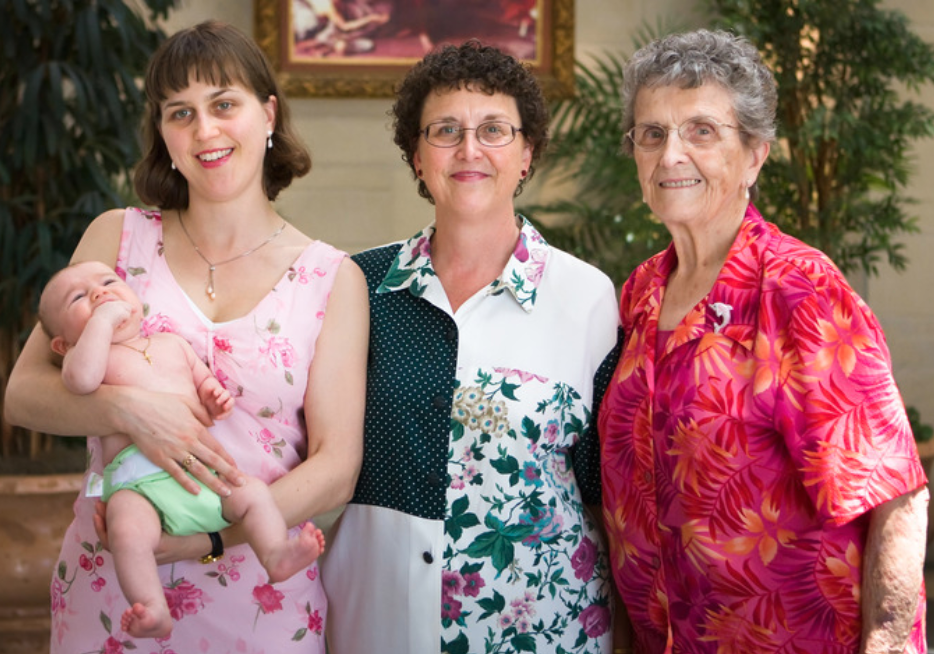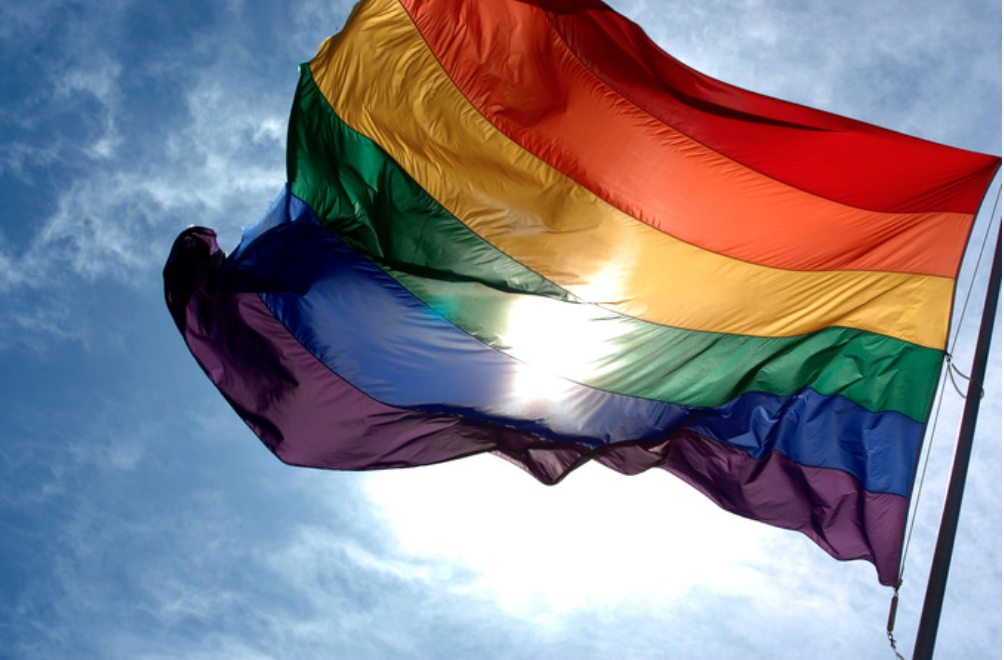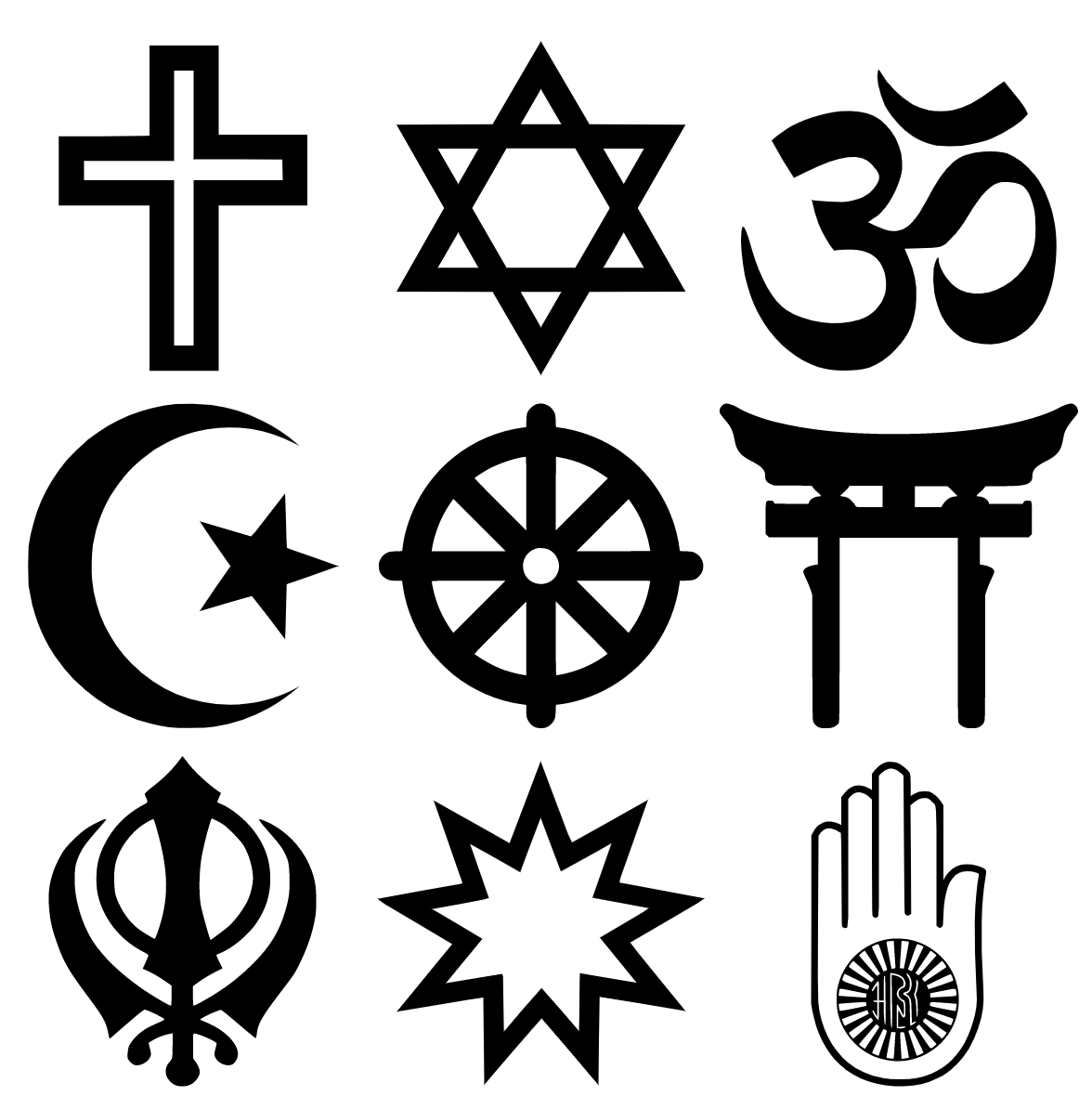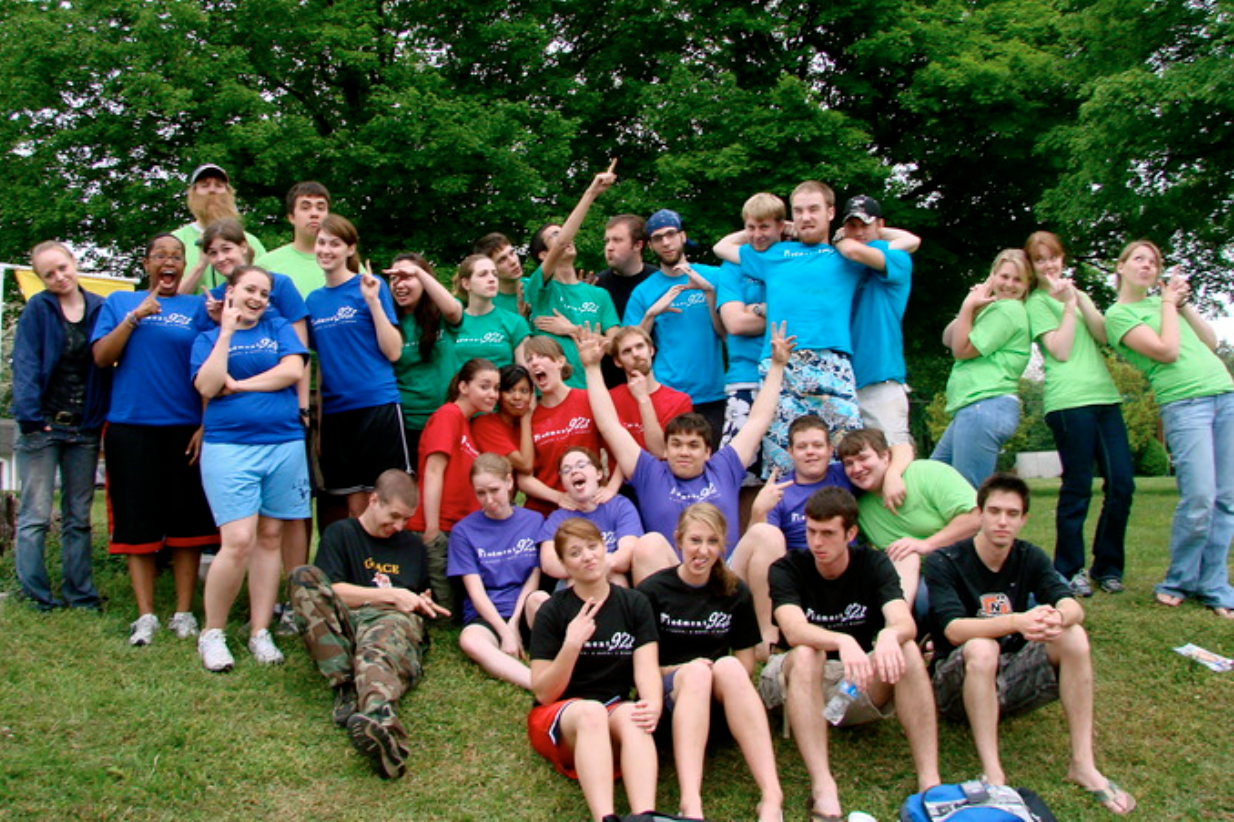5.2: Demographic Factors to Consider
- Page ID
- 106003
\( \newcommand{\vecs}[1]{\overset { \scriptstyle \rightharpoonup} {\mathbf{#1}} } \)
\( \newcommand{\vecd}[1]{\overset{-\!-\!\rightharpoonup}{\vphantom{a}\smash {#1}}} \)
\( \newcommand{\id}{\mathrm{id}}\) \( \newcommand{\Span}{\mathrm{span}}\)
( \newcommand{\kernel}{\mathrm{null}\,}\) \( \newcommand{\range}{\mathrm{range}\,}\)
\( \newcommand{\RealPart}{\mathrm{Re}}\) \( \newcommand{\ImaginaryPart}{\mathrm{Im}}\)
\( \newcommand{\Argument}{\mathrm{Arg}}\) \( \newcommand{\norm}[1]{\| #1 \|}\)
\( \newcommand{\inner}[2]{\langle #1, #2 \rangle}\)
\( \newcommand{\Span}{\mathrm{span}}\)
\( \newcommand{\id}{\mathrm{id}}\)
\( \newcommand{\Span}{\mathrm{span}}\)
\( \newcommand{\kernel}{\mathrm{null}\,}\)
\( \newcommand{\range}{\mathrm{range}\,}\)
\( \newcommand{\RealPart}{\mathrm{Re}}\)
\( \newcommand{\ImaginaryPart}{\mathrm{Im}}\)
\( \newcommand{\Argument}{\mathrm{Arg}}\)
\( \newcommand{\norm}[1]{\| #1 \|}\)
\( \newcommand{\inner}[2]{\langle #1, #2 \rangle}\)
\( \newcommand{\Span}{\mathrm{span}}\) \( \newcommand{\AA}{\unicode[.8,0]{x212B}}\)
\( \newcommand{\vectorA}[1]{\vec{#1}} % arrow\)
\( \newcommand{\vectorAt}[1]{\vec{\text{#1}}} % arrow\)
\( \newcommand{\vectorB}[1]{\overset { \scriptstyle \rightharpoonup} {\mathbf{#1}} } \)
\( \newcommand{\vectorC}[1]{\textbf{#1}} \)
\( \newcommand{\vectorD}[1]{\overrightarrow{#1}} \)
\( \newcommand{\vectorDt}[1]{\overrightarrow{\text{#1}}} \)
\( \newcommand{\vectE}[1]{\overset{-\!-\!\rightharpoonup}{\vphantom{a}\smash{\mathbf {#1}}}} \)
\( \newcommand{\vecs}[1]{\overset { \scriptstyle \rightharpoonup} {\mathbf{#1}} } \)
\( \newcommand{\vecd}[1]{\overset{-\!-\!\rightharpoonup}{\vphantom{a}\smash {#1}}} \)
Age
Since individuals of the same generation often share similar values, beliefs, and attitudes, age is an important variable to consider.
LEARNING OBJECTIVE
Recognize characteristics of different generations
KEY TAKEAWAYS
Key Points
- Individuals who grow up at the same time are a generation and often share many of the same experiences as others of the same age group. They exhibit a set of shared values, beliefs, and attitudes that are important to consider when preparing a speech.
- When you speak to an audience with members of different ages, you are likely to experience a generation gap.
- As new generations seek to define themselves as something apart from the old, they adopt new lingo and slang, allowing a generation to create a sense of division from the previous one.
- It is important to become aware of one’s own biases in order to avoid ageism in your speeches.
- The use of handheld communications technology has created a wide gap between older and younger generations.
Key Terms
- Generation: Cohorts of people who were born in the same date range and share similar cultural experience.
- ageism: Ageism, or age discrimination is stereotyping and discriminating against individuals or groups because of their age. It is a set of beliefs, attitudes, norms, and values used to justify age based prejudice, discrimination, and subordination.
Age is an Important Audience Characteristic
Age is an important variable to consider when analyzing your target audience. Individuals who grow up at the same time are called cultural generations. They often share many of the same experiences as others of the same age group. An outcome of a cultural generation is a set of shared values, beliefs, and attitudes that are important to consider when preparing a speech. All four of the women in the figure are from different generations and will have had different experiences. Of which generation do you think they are a member? To which generation do you belong?

Generations
Consider the generations living today and some of their associated characteristics:
- The Baby Boom generation were born after World War II, from 1946 to 1964. In general, baby boomers are associated with a rejection or redefinition of traditional values. Boomers tended to think of themselves as a special generation, very different from those that had come before them.
- Generation X is the generation defined as those born after the baby boom ended, from 1965 to 1981.Change is more the rule for the people of Generation X than the exception. Unlike their parents, who challenged leaders with an intent to replace them, Gen Xers tend to ignore leaders and work for more long-term institutional and systematic change through economic, media, and consumer actions
- Millennials, also known as Generation Y, describes the generation following Generation X, from 1981 to 1999. One segment of this age group has often been called the “eighties babies” generation. Millennials are generally marked by an increased use and familiarity with communication, media, and digital technologies. In most parts of the world its upbringing was marked by an increase in a neoliberal approach to politics and economics.
- Generation Z, also known as “Digital Natives,” is a term that reflects the pluralistic and fragmented society of those with birth dates between 1997 and 2012. Generation Z is highly connected, as many members of this generation have had lifelong use of communications and media technologies. No longer limited to the home computer, the Internet is now increasingly carried in their pockets on mobile Internet devices.
- Generation AO, the Always-On Generation (or Gen AO), describes people born between the early 2000s and the 2020s whose lives have been influenced by connectivity and easy access to people and knowledge through the Internet. They are nimble, quick-acting multi-taskers who count on the Internet as their external brain. Experts predict Gen AO will exhibit a thirst for instant gratification and quick fixes, a loss of patience, and a lack of deep-thinking ability.
Generation Gaps and Trends
When you speak to an audience with members of different ages, you are likely to experience a generation gap. Each generation sets its own trends and has its own cultural impact.
- Language Use: Generations can be distinguished by the differences in their language use. The generation gap has created a parallel gap in language that can be difficult to communicate across. As new generations seek to define themselves as something apart from the old, they adopt new lingo and slang, allowing a generation to create a sense of division from the previous one.
- Slang: Slang is an ever-changing set of colloquial words and phrases that speakers use to establish or reinforce social identity or cohesiveness within a group or society at large. As each successive generation of society struggles to establish its own unique identity among its predecessors, generational gaps provide a large influence over the continual change and adaptation of slang.
- Technological Influences: Every generation develops new slang, but with the development of technology, understanding gaps have widened between the older and younger generations. The term “communication skills,” for example, might mean formal writing and speaking abilities to an older worker. But it might mean e-mail and instant messaging to a 20-something. Cell phones, texting, tweeting and the like have encouraged younger users to create their own inventive, quirky, and very private written language. They are more connected than ever, but also far more independent.
Gender
A speaker has an opportunity to address years of masculine and feminine gender role conditioning through the use of inclusive language.
LEARNING OBJECTIVE
List the dangers of using gendered language in your speeches
KEY TAKEAWAYS
Key Points
-
It is important to remember that since birth, we have been conditioned to make the distinction between men and women, masculinity and femininity.
- Advertisers create “gendered environments” in everything from children’s toys to motor vehicles.
- Gender neutral language and gender inclusive language aims to eliminate (or neutralize) reference to gender in terms that describe people.
- One must guard against gender discrimination and stereotyping members of the audience.
Key Terms
- transgender: More narrowly, having a gender (identity) which is different from the sex one was assigned at birth, e.g. being assigned male at birth but having a female gender or vice versa; or, pertaining to such people. More broadly, not identifying with culturally conventional gender roles and categories of male or female; having changed gender identity from male to female or female to male, or identifying with elements of both, or having some other gender identity; or, pertaining to such people.
- gender: The sociocultural phenomenon of dividing people into the categories of “male” and “female,” with each having associated clothing, roles, stereotypes, etc.
Gender and Genderism
It is important to remember that since birth, we have been conditioned to make the distinction between men and women, masculinity and femininity. Gender is the perceived or projected (self-identified) masculinity or femininity of a person. Societies tend to have binary gender systems in which everyone is categorized as male or female, but this is not universal. Some societies include a third gender role, referred to as transgender, which combined both male and female.
Although there are almost as many males as females in the U.S. population, not all people conform to the their birth sex. Genderism is the cultural belief that gender is binary, or that there are, or should be, only two genders—male and female—and that the aspects of one’s gender are inherently linked to the sex in which they were assigned at birth. It reinforces negative attitudes, bias and discrimination toward people who display expressions of gender variance or nonconformity and/or whose gender identity is incongruent with their birth sex.
Advertisers do,however, create “gendered environments” in everything from children’s toys to motor vehicles. For example, early on children are exposed to toy commercials that are set out to target a specific gender. As a result, western society is conditioned to believe that dolls and houses are for little girls because they represent the idea that females are to be fertile and nurturing. Little boys are conditioned to believe that they can only play with toys that will define their masculinity, such as cars and toy weapons. Much like the masculine ideal, toys for little boys often include cars, action figures, and sporting goods, all which fulfill the idea of a conquest. These items and the advertisements redefine the gender role ideal that men are active, strong, and courageous. On the other hand, little girls are raised to believe that their roles is to care for the family. Typically, little girls toys include baby dolls and play houses. Since the idea of identification carries immense weight in the targeting of specific audiences, advertisers begin promoting the concept of gendered environments early on beginning with children’s toys. However, as people grow older the gender roles are only made more evident and are further perpetuated in advertising that is targeted towards adults.
What can the speaker do?
Use inoffensive language in your speeches.
Cognitive psychologist and linguistics suggest that word choice has significant framing effects on the perceptions, memories, and attitudes of speakers and listeners. When one uses less inclusive or stereotypical language, the following can occur:
- The rights, opportunities, and freedoms of certain people are restricted because they are reduced to stereotypes.
- Stereotyping is mostly implicit, unconscious, and facilitated by the availability of pejorative labels and terms
- Rendering the labels and terms socially unacceptable, people then must consciously think about how they describe someone unlike themselves
- When labeling is a conscious activity, the described person’s individual merits become apparent, rather than their stereotype.
Use Gender Neutral Language in your speeches.

Gender neutral language and gender inclusive language aims to eliminate (or neutralize) reference to gender in terms that describe people. For example, the words fireman, stewardess, and, arguably, chairman, are gender specific; the corresponding gender neutral terms are firefighter, flight attendant and chairperson (or chair). The pronoun “he” may be replaced with “he or she,” “s/he,” or “they” when the gender of the person referred to is unknown. Other gender specific terms, such as actor and actress may be replaced by the originally male term “actor” used for either gender.
Gender-neutral language should not be confused with genderless language, which refers to languages without grammatical gender. It has become common in academic and governmental settings to rely on gender neutral language to convey inclusion of all sexes or genders (gender inclusive language). Various forms of gender neutral language are becoming more common, but the underlying gender roles are still evident in our society. We still have generations of previously defined gender roles and associated language use to conquer.
Tips for the Speaker
One must guard against gender discrimination and stereotyping members of the audience. It is not enough to be politically correct by using inclusive, neutral terminology; one can also explore more fully the gender conditioning that has occurred throughout ones lifetime from childhood to adulthood in order to confront genderism.
Sexual Orientation
The sexual orientation of your audience members should be taken into account when giving a speech.
LEARNING OBJECTIVE
Define the three main classifications of sexual orientation: bisexuality, heterosexuality, and homosexuality
KEY TAKEAWAYS
Key Points
-
There are three main classifications of sexual orientation: bisexuality, heterosexuality and homosexuality, all a part of the heterosexual–homosexual continuum.
-
Most sexual orientation specialists follow the general conclusion of Alfred Kinsey regarding the sexual continuum, according to which a minority of humans are exclusively heterosexual or homosexual, and that the majority are bisexual.
-
Sexual orientation, in most individuals, is shaped at an early age and is not voluntarily changeable.
-
The speaker should become aware of and compensate for the bias of heteronormativity, which holds that people fall into distinct and complementary genders (man and woman) with natural roles in life.
Key Terms
-
heteronormativity: The view that all human beings are either male or female, both in sex and in gender, and that sexual and romantic thoughts and relations are normal only when between people of different sexes.
-
heterosexism: A system of attitudes, bias, and discrimination in favor of opposite-sex sexuality and relationships. It can include the presumption that everyone is heterosexual or that opposite-sex attractions and relationships are the only norm and therefore superior.
Sexual Orientation
On a Continuum from Hetrosexual to Homosexual
When taking into account the sexual orientation of your audience it is useful to consider it on a continuum. Your audience could be made up of members anywhere along the continuum. There are three main classifications of sexual orientation: heterosexuality, bisexuality, and homosexuality.
Hetrosexuality
Heterosexuality is romantic or sexual attraction or behavior between persons of the opposite sex. As a sexual orientation, heterosexuality refers to “an enduring pattern of or disposition to experience sexual, affectionate, physical, or romantic attractions to persons of the opposite sex. ” It also refers to “an individual’s sense of personal and social identity based on those attractions, behaviors expressing them, and membership in a community of others who share them. ” The term is usually applied to humans, but is also observed in all mammals.
Homosexuality
The term “gay” in the West is not recognized by all men who have sex with men (MSM) as known in the rest of the world. “Gay” is generally used to describe a sexual orientation, while “MSM” describes a behavior. Also, men in Africa and Latin America engage in sexual relationships with other men while still referring to themselves as heterosexual, which is known as being “on the down-low. ” The same applies to men who engage in homosexual activities in the military, gender segregated schools and universities, or prison, as most of them do not consider themselves as gay but still engage sexually with members of their own sex in order to fulfill their sexual desires.
Correspondingly, “lesbian” as a concept, used to differentiate women with a shared sexual orientation, is a 20th-century construct. Throughout history, women have not had the freedom or independence to pursue homosexual relationships as men have, but neither have they met the harsh punishment in some societies as homosexual men. Instead, lesbian relationships have often been regarded as harmless and incomparable to heterosexual ones unless the participants attempt to assert privileges traditionally enjoyed by men. Women who have sex with women (WSW) is a term used to identify women who engage in sexual activities with other women, whether or not they identify themselves as lesbian or bisexual. The term is often used in medical literature to describe such women as a group for clinical study, without needing to consider the issues of sexual self-identity.
Bisexuality
A third orientation is bisexuality. Bisexuality is a romantic or sexual attraction or behavior toward both males and females. The term is especially used in the context of human sexual attraction to denote romantic or sexual feelings toward men and women. People who have a distinct but not exclusive sexual preference for one sex over the other may identify themselves as bisexual. Bisexuality has been observed in various human societies and elsewhere in the animal kingdom throughout recorded history. The term bisexuality, like the terms hetero- and homosexuality, was coined in the 19th century.
Most sexual orientation specialists follow the general conclusion of Alfred Kinsey regarding the sexual continuum, according to which a minority of humans are exclusively heterosexual or homosexual, and that the majority are bisexual. The consensus of psychologists is that sexual orientation, in most individuals, is shaped at an early age and is not voluntarily changeable.
The rainbow colors and the rainbow flag, once only used by the LGBTQ community in major cities of the West, is now appearing around the world to show solidarity with or acceptance of the LGBTQ community.

Become Aware of Bias—Heteronormativity and Heterosexism
Speakers should be aware of the bias in the audience and in Western society in general toward heteronormativity and heterosexism. One common mistake that speakers make is assuming that the audience is just like them with regards to this aspect of identity.
Heteronormativity is the body of lifestyle norms that holds that people fall into distinct and complementary genders (man and woman) with natural roles in life. It also holds that heterosexuality is the normal sexual orientation, and that sexual and marital relations are most (or only) fitting between a man and a woman. A “heteronormative” view is one that involves alignment of biological sex, sexuality, gender identity, and gender roles.
Heterosexism is a system of attitudes, bias, and discrimination in favor of opposite-sex sexuality and relationships. It can include the presumption that everyone is heterosexual or that opposite-sex attractions and relationships are the only norm and therefore superior. Nonetheless, heterosexism as discrimination ranks gay men, lesbians, bisexuals, and other sexual minorities as second-class citizens with regard to various legal and civil rights, economic opportunities, and social equality in the majority of the world’s jurisdictions and societies.
Tips for the Speaker
Consider how to combat heterosexism in your audience analysis and speech making. For example, rather than referring to or asking in an interview if one has a boyfriend or girlfriend, you can ask if the person is seeing someone or has a significant relationship. One can also use the term “partners” rather than the more heteronormative “husband” or “wife. ” And remember that families come in all different kinds of formations, not just biological male and female birth parents with their child.
Finally, there may be many speech topics where the sexual orientation of the audience will not be an important consideration. However, there are some areas which are important to LGBTQ people, such as laws around the world that criminalize homosexual behavior, recognition of relationships, same-sex marriage, LGBTQ adoption, immigration issues, violence and hate crimes, and legal aspects of transsexualism.
Education
Consider both the formal education and the self-directed learning of the members of your audience to adapt your speech content.
LEARNING OBJECTIVE
Demonstrate how knowing your audience’s knowledge of your topic can inform your speech
KEY TAKEAWAYS
Key Points
- As your prepare your speech, ask yourself what do the members of the audience already know about the topic.
- Do not assume that your audience will know something just because you do.
- Look for audience cues (i.e. the questions they ask) to identify knowledge gaps.
- Remember it is important to consider not only the formal education but the self-directed learning of the members of your audience in order to gear you speech to right level of understanding.
Key Terms
- education: Facts, skills, and ideas that have been learned, either formally or informally.
- knowledge: Familiarity or understanding of a particular skill, branch of learning, etc.
Introduction
As you prepare your speech, first ask yourself what the members of the audience already know about the topic. What is their level of knowledge and are they able to learn more? Remember, it is important to consider not only the formal education but the self-directed learning of audience members in order to gear you speech to the right level of understanding.
To see the importance, here is an example provided by Lewis.
Lewis’ Story
I enjoy learning new things and I love sharing what I know. Or, more accurately, I love sharing what I think I know. If I can learn something while I’m sharing, that’s a total bonus. A totally uneventful presentation can be relaxing but I kind of like to keep it edgy, learn something from the process. Not so much a projector exploding right before I present but things that make me stretch. Being a good presenter is a personal goal for me. Part of creating a good presentation is knowing your audience and aiming the material right between their eyes.
I was giving a presentation recently. It was a presentation for work. I had given a general purpose “What is a data mart? ” presentation last year and this was Part Two, digging into our financial transactions data mart. I was specifically going over the mart’s facts and dimensions. One of the requests for the presentation was to explain how to efficiently query the data and an overview of why our data mart (specifically this star schema) might be faster than other styles of design.
I started with a refresher: what is a fact, what is a dimension; and then segued into the facts and dimensions specific to our mart. I spoke a little bit about what we had and why we chose those particular entities. I then moved onto the performance benefits. I spent quite a bit of time explaining bitmap indexes and star transformations. I really thought that was where most of my questions would be. The fascinating thing to me is where the discussion ended up. It wasn’t a failure to understand bitmaps (I credit my awesome diagram for that) nor was it anything confusing about star transformations.
On a couple of slides I had mentioned “query rewrite” in relation to tuning (using aggregates) and star transformations. What I learned is that something that has become second nature to me might not be to many other people. The fact that Oracle would rewrite my query at runtime used to really scare me. After seeing the magic (which is what it felt like at first), I got used to it and have come to expect it (in the right situations).
But my audience was sitting there wondering, “What does query rewrite mean? ” Some thought that it meant the developer did not write it correctly the first time so Oracle was recommending that it be rewritten as a star transformation (or to go against a materialized view instead of a base table).
That is such an obvious misconception that I can’t believe I didn’t even anticipate it at all. The questions and comments I got on that drove a nice discussion. One of the questions was, “Would someone be monitoring the rewrites so that it could be done better next time? ” It took me a while to understand the question; I literally was not understanding the disconnect for a few minutes. It’s a good question, based on the audience’s understanding at the time that I gave them more information.
The problem was not with the audience, it was my failure to make sure that my presentation gave a basic explanation of the terms I would be using. I learning that it is important to “know thy audience. ” Data marts were new to most of this group. That’s why I took the time to define a fact, a dimension, bitmap indexes, star schemas, star joins, etc. Query rewrite (basic, advanced) is such a fundamental part of what I was explaining, I totally glossed over it. It’s like explaining why the sidewalk is hard but not giving a definition of concrete.
I finally explained that Oracle was rewriting it based on data (statistics) it had at runtime, on knowledge of the structures in the database, and on algorithms that know how to optimize very certain types of queries to get the best throughput from them.
What Lewis Learned

It reminded me to remember that I need to look at my presentation from the view of someone sitting in the audience, not the view on the podium. This is a lesson for you, too. Knowing what your audience knows is key to giving a good presentation.
Religion
Understanding the religions in your audience will help you relate to the members and avoid excluding members of differing religions.
LEARNING OBJECTIVE
Identify the world’s religions and speak with sensitivity to religious beliefs
KEY TAKEAWAYS
Key Points
- Individuals who practice a religion have belief systems and worldviews that relate humanity to spirituality and moral values.
- Since the First Amendment of the U.S. Constitution allows the existence of religious pluralism in the U.S., you are likely to encounter audience members of different religions.
- There are roughly 4,200 religions in the world. The five largest religious groups by population are Christianity, Islam, Buddhism, Hinduism and Chinese folk religion.
- Understanding the religions in your audience will help you relate to members of the audience more directly and avoid excluding members who may not observe the same practices as you do.
Key Terms
- religious pluralism: The peaceful coexistence of multiple religions in a community
- irreligious: Irreligious describes an absence of any religion; where as anti-religion describes an active opposition or aversion toward religions in general.
- religion: Religion is a collection of belief systems, cultural systems, and worldviews that relate humanity to spirituality and, sometimes, to moral values.
Religion
Individuals who practice a religion have belief systems and worldviews that relate humanity to spirituality and moral values. According to some estimates, there are roughly 4,200 religions in the world. The members of your audience could be followers of any of those religions.
Religions may involve the worship of a god or gods or a spiritual force. Many religions have days of observance, narratives, symbols, traditions, and sacred histories that are intended to give meaning to life or a preferred lifestyle from their ideas about the cosmos and human nature.
The five largest religious groups by population, estimated to account for between 5 and 7 billion people, are Christianity, Islam, Buddhism, Hinduism, and Chinese folk religion.

Religious Symbols: Religious symbols represent different belief systems.
Five largest religions……………………..Adherents in 2000……………………..% of world population
Christianity………………………………………. 2.0 billion……………………………………….. 33%
Islam………………………………………………. 1.2 billion………………………………………. 19.6%
Hinduism………………………………………… 811 million……………………………………… 13.4%
Chinese Folk religion……………………….. 385 million……………………………………….. 6.4%
Buddhism……………………………………….. 360 million……………………………………….. 5.9%
Additionally, there are may be atheist and agnostics in your audience. The terms “atheist” (lack of belief in any gods) and “agnostic” (belief in the unknowability of the existence of gods), though specifically contrary to theistic (e.g. Christian, Jewish, and Muslim) religious teachings, do not by definition mean the opposite of “religious. ” There are religions (including Buddhism and Taoism) that classify some of their followers as agnostic, atheistic, or nontheistic. The true opposite of “religious” is “irreligious.”
Since the First Amendment to the U.S. Constitution guarantees the separation of church and state, the U.S. has no dominant state religion. People with different beliefs are free to practice their religion in the U.S. or to practice no religion.
Tips for the Speaker
Unless you are speaking to a particular religious group, you are likely to encounter audience members from several of the world’s religions in your audience. Understanding the religions in your audience will help you relate better to members of the audience and avoid excluding members who may not observe the same practices as you do. It is important to avoid subtle religious discrimination when speaking to a general audience. Often it will be necessary for you to put aside your own belief system to understand the religion of the members of the audience. Of course, you not required to accept or embrace other religions but simply to be aware of and sensitive to them.
Culture, Ethnicity, and Race
As society becomes more diverse, the speaker will find it useful to learn more about the cultures, races and ethnic groups in each audience.
LEARNING OBJECTIVE
Give examples of ethnocentrism and prejudice
KEY TAKEAWAYS
Key Points
- The simplest way to think about culture is to think about the distinction between nature (our biology and genetics) and nurture (our environment and surroundings that also shape our identities).
- In terms of race an individual is usually externally classified (meaning someone else makes the classification ) but individual may also self-identify with a particular racial group.
- Unlike race, ethnicity is not usually externally assigned by other individuals. The term ethnicity focuses more upon a group’s connection to a perceived shared past and culture.
- The cultural, racial and ethnic makeup of the United States is becoming more diversified and audiences will reflect that diversity as the population continues to shift.
- In order to adapt the message to the audience it is important to become aware of one’s own ethnocentrism and to avoid prejudice and racism.
Key Terms
- race: A large group of people distinguished from others on the basis of common physical characteristics, such as skin color or hair type.
- ethnocentrism: judging another culture solely by the values and standards of one’s own culture
- ethnicity: characteristics of a group of people thought to have common ancestry who share a distinctive culture
Culture, Race and Ethnicity
In addition to considering the attitudes of the audience toward different cultures, races or ethnic groups, it is also important to consider how a diverse group will respond to certain parts of your message. Before considering the role of culture, race and ethnicity in audience analysis it is useful to distinguish among the terms.
Culture
Culture is the non-biological or social aspects of human life; basically anything that is learned by humans is part of culture.
Let’s look at the two avatars shown in to help illustrate the concept of culture.The avatar wearing nothing but shorts comes close to representing nothing but nature. The avatar wearing the colorful vest and pants stands in stark contrast to the other avatar. This second avatar is reflective of a particular culture. Culture is more than the object or behavior. Culture also includes, norms, values, beliefs, or expressive symbols.

Race and Ethnicity
A race is a human population that is believed to be distinct in some way from other humans based on real or imagined physical differences. An individual is usually externally classified (meaning someone else makes the classification) but individual may also self-identify with a particular racial group.
Ethnicity, while related to race, refers not to physical characteristics but to social traits that are shared by a human population. Some of the social traits often used for ethnic classification include:
- nationality
- tribe
- religious faith
- shared language
- shared culture
- shared traditions
Tips for Speaker-Becoming Aware of Ethnocentrism and Prejudice
In order to adapt the message to the audience it is important to become aware of your own ethnocentrism and to avoid prejudice and racism. When you judge another culture solely by the values and standards of your own culture you miss significant aspects of the other culture of the members of your audience. Racism or racial discrimination operates in a similar way. Racism can refer to any or all of the following beliefs and behaviors:
- race is the primary determinant of human capacities (prejudice or bias)
- a certain race is inherently superior or inferior to others (prejudice or bias)
- individuals should be treated differently according to their racial classification (prejudice or bias)
- actually treating of individuals differently based on their racial classification (discrimination)
In order for the speaker to collect objective knowledge about other cultures, racial or ethnic groups it is important to avoid prejudice. Prejudice involves coming to a judgment on a subject before learning where the preponderance of evidence actually lies. Alternatively, prejudice can refer to the formation of a judgment without direct or actual experience.
When looking at another culture or ethnic group in order to compensate for ethnocentrism as a speaker, try to look at the other group through the eyes of the members of that particular ethnic or cultural group. As our society becomes more diverse, the speaker will find it desirable to put aside ethnocentrism and prejudice to learn more about the cultures, races and ethnic groups that will be an increasing part of the local and global audience.
Group Membership
Audience members who belong to the same group are likely to share values, beliefs, and attitudes with other members of the group.
LEARNING OBJECTIVE
Apply your knowledge of your audience’s group affiliation
KEY TAKEAWAYS
Key Points
- Foreknowledge of the audience ‘s affiliations and the associated values, beliefs, and attitudes will help the speaker prepare the message.
- Group members can classify their membership in two categories: primary (family or fraternal organizations) and secondary (clubs, associations, or colleges).
- Generally speaking the longer and more actively one is involved with a group the more likely the member is to share ideas and profess beliefs shared by other group members.
Key Terms
- Secondary group: A large group involving formal and institutional relationships. Secondary relationships involve weak emotional ties and little personal knowledge of one another.
- primary group: A small social group whose members share personal and lasting relationships. The family is the most important primary group.
Primary and Secondary Group Membership
The members of your audience may be from different groups or they may all be part of the same group. Group membership describes an association with two or more people.
In general, one can look at two types of groups—primary and secondary.
Primary
Primary group membership shapes the attitudes, values, and beliefs of its members; the members are likely to reflect or express those when listening to a speaker.
Audience members who are part of a primary group that is more long lasting will share experiences with the other group members who shape their beliefs, attitudes, and world views. Also, one may have to agree to a set of norms or values which are shared by all members in order to become a member of a group. Some group memberships involved selection by other group members and initiation into the group.
Secondary
Secondary groups, in contrast to primary groups, are large groups involving formal and institutional relationships. Secondary relationships involve weak emotional ties and little personal knowledge of one another. Most secondary groups are short term, beginning and ending without particular significance. They may last for years or may disband after a short time. The formation of primary groups happens within secondary groups.
Primary groups can be present in secondary settings. For example, when you are attending a university you are part of a secondary group at a student activity; while at the university you may form friendships or relationships that will last a lifetime, which would be a primary group.

Generally speaking, the longer and more actively one is involved with a group the more likely the member is to share ideas and profess beliefs shared by other group members. For example, members of a college club may share only an interest in a particular sport or activity, whereas members of a fraternity or sorority may be more involved by living together like a family and professing similar attitudes and beliefs.
Tips for Speaker
Foreknowledge of the audience’s affiliations and the associated values, beliefs, and attitudes will help the speaker prepare the message. You may be speaking to members who are all part of the same group, such as an on-campus sobriety or DeMolay; the members of the two groups will have different shared background experiences and beliefs based on their membership in that group.

